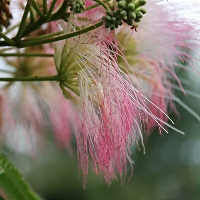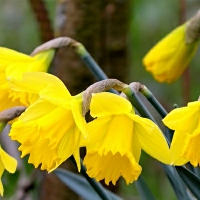花的英文句子
1、每朵石榴花开了以后,都站在枝头看太阳。
after each pomegranate blossom, they all stand on the branches to watch the sun.
2、有几百枝杏花,如喷火蒸霞一般。
there are hundreds of apricot flowers, such as steaming through fire.
3、花园里的花都无精打采地将头低垂下去。
the flowers in the garden drooped their heads listlessly.
4、牵牛花生出了紫色的小花宝宝。
morning glory peanuts have purple baby flowers.
5、太阳花在阳光下懒洋洋的伸展着手臂。
sunflower stretched its arms lazily in the sun.
6、牵牛花绽开了紫色的笑脸。
morning glory blooms a purple smile.
7、游龙山上的牡丹花露出灿烂的笑容。
the peony flowers on youlong mountain show a brilliant smile.
8、杜鹃花在天亮的时候,被太阳公公吵醒了。
rhododendron was awakened by the sun at dawn.
9、校园花坛里的月季花羞答答的开了。
the rose flowers in the campus flower bed opened shyly.
10、蔷薇花露出了笑脸。
the rose flowers showed a smile.
11、桃花细逐杨花落,黄鸟时兼白鸟飞。
the peach blossom follows the poplar flower to fall, the yellow bird flies simultaneously with the white bird.
12、牵牛花绽放了绚烂的微笑。
morning glory blooms a gorgeous smile.
13、月季花开,微风吹来,不停摇摆招手。
the rose blooms and the breeze blows, waving and waving.
14、玫瑰花的花瓣好像娇羞的少女。
the petals of a rose are like a shy girl.
15、玫瑰花在中午的时候和太阳公公捉迷藏。
rose plays hide and seek with the sun at noon.
16、桂花半遮着面,羞羞答答地绽开了。
the osmanthus fragrans, half covered, bloomed shyly.
17、五点左右,艳丽的蔷薇欢快的绽开了笑脸。
around five o'clock, the gorgeous rose bloomed happily with a smile.
18、寒冬里,雪中傲立的梅花静静地开了。
in the cold winter, the plum blossom standing in the snow quietly opened.
19、广玉兰总是绽放出最灿烂的笑容。
magnolia grandiflora always blooms the most brilliant smile.
20、冬天到了,而梅花不愿逃避这场花界浩劫。
winter is coming, and plum blossom does not want to escape the catastrophe of the flower world.
21、昙花却在九点左右舒展开美丽的笑脸。
epiphyllum but at about nine o'clock shu unfolded a beautiful smile.
22、蔷薇花张开笑脸在微风中盛开了。
the rose opens its smiling face and blooms in the breeze.
23、桂花顽强得顶住了风雨洗礼,终于盛开了。
osmanthus tenacious to withstand the baptism of wind and rain, and finally in full bloom.
24、荷花在风中微笑的脸庞真是娇艳无比。
lotus smiling face in the wind is really gorgeous.
25、公园里的樱花真美,像小姑娘的脸。
the cherry blossoms in the park are beautiful, like the face of a little girl.
26、花儿像小姑娘似的害羞的开了。
the flowers opened shyly like a little girl.
27、春天公园里的小草披上了碧绿碧绿的衣裳。
in spring, the grass in the park is covered with green clothes.
28、清晨,淡紫色的牵牛花羞答答地开放了。
in the morning, the lilac morning glory blooms shyly.
29、花儿醒来了,开出朵朵美丽的花瓣。
the flowers wake up and bloom with beautiful petals.
30、迎春花露出了笑脸,在向人们问好。
jasminum nudiflorum showed a smile and said hello to people.
31、公园里的花倾力吐艳,绽开了美丽的笑脸。
the flowers in the park are full of beautiful smiles.
32、乍晴乍雨杏花天,洁白杏花醉人眼。
it's sunny and rainy, and the white apricot blossom is intoxicating.
33、太阳花绽放出他那笑脸。
the sunflower bloomed his smiling face.
34、春寒料峭,枝头的腊梅笑得合不拢嘴。
the spring is chilly, and the wintersweet on the branches laughs.
35、梅花露出漂亮的脸蛋真是可爱。
plum blossom shows a beautiful face, which is really lovely.
36、桂花开了,绽开灿烂的笑容,迎风舞蹈。
sweet scented osmanthus is in bloom, with a bright smile and dancing in the wind.
37、迎春花是春天的使者,我爱迎春花!
jasmine is the messenger of spring, i love jasmine!
38、烂漫的樱花比赛似的盛开了。
the brilliant cherry blossom competition is in full bloom.
39、牵牛花紧紧的缠绕着,就像皱起的眉头。
morning glory tightly twined, like a frown.
40、小小的米兰花,细微的像碎玉一般。
small milan flower, tiny like broken jade.
41、山荼花羞羞答答地绽开了笑脸。
the mountain tea flower opens a smile shyly.
42、桂花姑娘笑着摇着头享受着阳光的来了。
sweet scented osmanthus girl smiles and shakes her head to enjoy the sunshine.
43、水仙花开了,偷偷地喷洒了一股清香。
the daffodils opened and secretly sprayed a fragrance.
44、荷花羞答答地露出了绯红的小脸。
lotus blushed shyly.
45、桃花绽开了笑颜,迷人的眼。
peach blossom blooms a smile, charming eyes.
46、桂花离开了牵挂他的树,慢慢的飘落下来。
osmanthus leaves the tree that cares about him and slowly falls down.
47、火红的杜鹃花照亮了自己美丽的身影。
the red azaleas light up their beautiful figure.
48、玫瑰花在清晨呼吸着雨后新鲜空气。
the rose breathes the fresh air after the rain in the morning.
49、牵牛花伸展的身子向世界打着招呼。
morning glory stretched out to greet the world.
50、海棠花柔情的舒展了她的双臂。
begonia flower tenderly extended her arms.
51、梅花在枝头调皮地挤在一起。
the plum blossoms were mischievously squeezed together on the branches.
52、一朵朵梨花露出了笑脸,争先恐后的开了。
one after another pear blossom showed a smile, competing to open.
53、阳光下盛开的百合花就像少女温暖的笑容。
lilies in full bloom in the sun are like a girl's warm smile.
54、蔷薇花打着羞涩的朵儿静悄悄的开放了!
the rose blossoms open quietly with shy flowers!
55、阳光下的杏树,第一朵杏花露出了笑脸。
apricot trees in the sun, the first apricot flower showed a smiling face.
56、月季花开了,绽开她那娇嫩粉红的笑脸。
the rose bloomed, her delicate pink smile.
57、这片梨花就像孩子的脸,朵朵含苞欲放。
this pear flower is like a child's face, blooming in bud.
58、那花如万片丹霞,千重红锦,好不烂漫。
that flower like ten thousand pieces of danxia, a thousand red brocade, not brilliant.
59、迎着瑟瑟的春风,小雏菊随风跳起舞蹈!
facing the rustling spring wind, the little daisy dances with the wind!
60、睡莲宛如亭亭玉立的仙子在池里开放了。
the water lily is like a fairy in the pool.
 莲灯一盏 2024-04-04 13:27:59
莲灯一盏 2024-04-04 13:27:59









